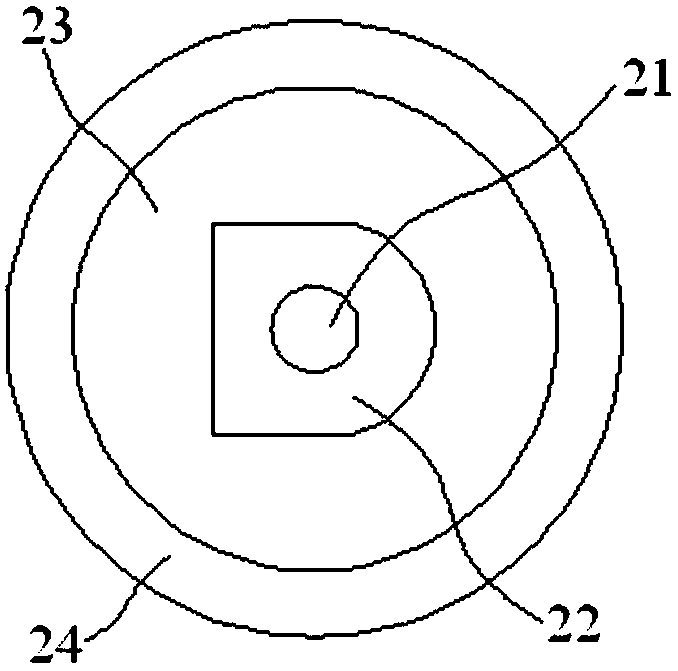Lasers for Laser Cutting Machines
A laser cutting machine and laser technology, applied in the field of lasers, can solve the problems of difficult real-time control, explosive perforation of metal materials, low processing efficiency, etc., and achieve the effects of improving light source utilization, fast response time, and fast cutting speed
- Summary
- Abstract
- Description
- Claims
- Application Information
AI Technical Summary
Problems solved by technology
Method used
Image
Examples
Embodiment 1
[0017] Embodiment 1: A laser for a laser cutting machine, comprising a pumping light source 1, a cladding fiber 2 and a transmission fiber 3, the pumping light source side pumps or end pumps the cladding fiber 2, the The clad fiber 2 further includes a laser gain medium core 21 located at the center, and the laser gain medium core 21 is sequentially coated with a glass isolation layer 22, a fluorescent material layer 23 and an outer cladding 24 from the inside to the outside. The refractive index of 21 is greater than the refractive index of the glass isolation layer 22, the refractive index of the glass isolation layer 22 is greater than the refractive index of the fluorescent material layer 23, the refractive index of the fluorescent material layer 23 is greater than the refractive index of the outer cladding 24, the cladding optical fiber 2 The input end and the output end are respectively provided with a first fiber Bragg grating 4 and a second fiber Bragg grating 5, and th...
Embodiment 2
[0021] Embodiment 2: A laser for a laser cutting machine, including a pumping light source 1, a cladding fiber 2 and a transmission fiber 3, the pumping light source side pumps or end pumps the cladding fiber 2, the The clad fiber 2 further includes a laser gain medium core 21 located at the center, and the laser gain medium core 21 is sequentially coated with a glass isolation layer 22, a fluorescent material layer 23 and an outer cladding 24 from the inside to the outside. The refractive index of 21 is greater than the refractive index of the glass isolation layer 22, the refractive index of the glass isolation layer 22 is greater than the refractive index of the fluorescent material layer 23, the refractive index of the fluorescent material layer 23 is greater than the refractive index of the outer cladding 24, the cladding optical fiber 2 The input end and the output end are respectively provided with a first fiber Bragg grating 4 and a second fiber Bragg grating 5, and the...
PUM
 Login to View More
Login to View More Abstract
Description
Claims
Application Information
 Login to View More
Login to View More - R&D Engineer
- R&D Manager
- IP Professional
- Industry Leading Data Capabilities
- Powerful AI technology
- Patent DNA Extraction
Browse by: Latest US Patents, China's latest patents, Technical Efficacy Thesaurus, Application Domain, Technology Topic, Popular Technical Reports.
© 2024 PatSnap. All rights reserved.Legal|Privacy policy|Modern Slavery Act Transparency Statement|Sitemap|About US| Contact US: help@patsnap.com










